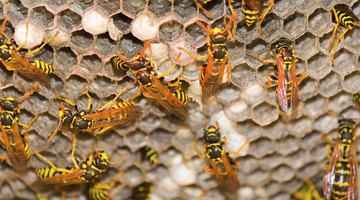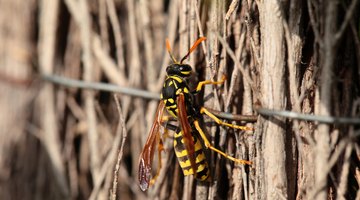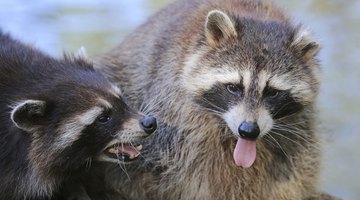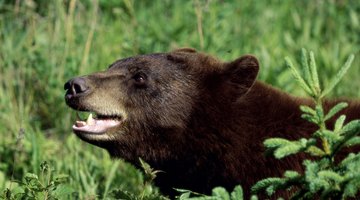What Animals Attack Yellow Jacket Nests in the Ground?
Warmer temperatures in spring and summer increase the odds that you’ll encounter nests of yellow jackets around your property.

Several species of wild animals serve as natural predators of yellow jacket, but because those animals can become nuisances or dangers near the home, it’s not advisable to attract wildlife as part of an effort to control yellow jackets.
Yellow Jackets

Yellow jackets are black-and-yellow wasps that nest underground, in hollow trees or logs. Their beige or tan nests have multiple layers of papery structures, with an outer envelope. They’re likely to build their nests near humans to scavenge off of sugar- and protein-laden garbage. If their nest is disturbed, perhaps by lawn-mowing or other gardening activities, yellow jackets will aggressively defend their territory by stinging multiple times. A yellow jacket nest may have thousands of residents by summer’s end. Yellow jackets benefit their ecosystems as pollinators, and as predators of caterpillars, flies and other crop- and plant-damaging pests.
Raccoons and Skunks

These ground-dwelling mammals destroy yellow jacket nests and eat the insects. Raccoons will sniff out the insects’ nests at night, dig up the nests and eat the yellow jackets. Skunks play a key role in curbing yellow jacket populations. Like raccoons, skunks ferret out yellow jacket nests in the night, as well as catch and eat the insects with their tails during the day. Badgers, wolverines and weasels also dig yellow jacket nests out of the ground and eat the insects.
Bears

Black bears eat a host of insects, including yellow jackets, other wasps, bees, termites and beetles. Bears hunt for insects under logs and along the ground, and will quickly devour an entire yellow jacket nest. Bears are likelier to eat the nests in the spring, before fruits, berries and mature plant leaves are plentiful. Once they’ve tracked down a good food source, bears tend to return to the scene for seconds, so be on the lookout if bears have frequented your property in search of insects or other food.
Controlling Yellow Jackets

Don’t rely on wildlife alone to control yellow jacket infestations, particularly colonies that have nested next to your home or in areas where children play. Hiring professional help is the best option for getting rid of stinging insects. If you want to eliminate the nest yourself, start by setting out hornet or wasp traps away from your home’s entrance. Or spray wasp and hornet insecticide into the nest opening, waiting until evening when most of the colony is in for the night. If you plan to tackle the nest yourself, wear protective eye gear, long pants and a long-sleeved shirt. If a yellow jacket nest isn’t near your home or threatening your family or pets, leave the colony alone. The insects will die off naturally when cool or rainy weather comes in the fall.
References
Photo Credits
- Jean Vaillancourt/iStock/Getty Images
- Jean Vaillancourt/iStock/Getty Images
- mariusz_prusaczyk/iStock/Getty Images
- Ben185/iStock/Getty Images
- Purestock/Purestock/Getty Images
- Robert Asento/iStock/Getty Images
More Articles



